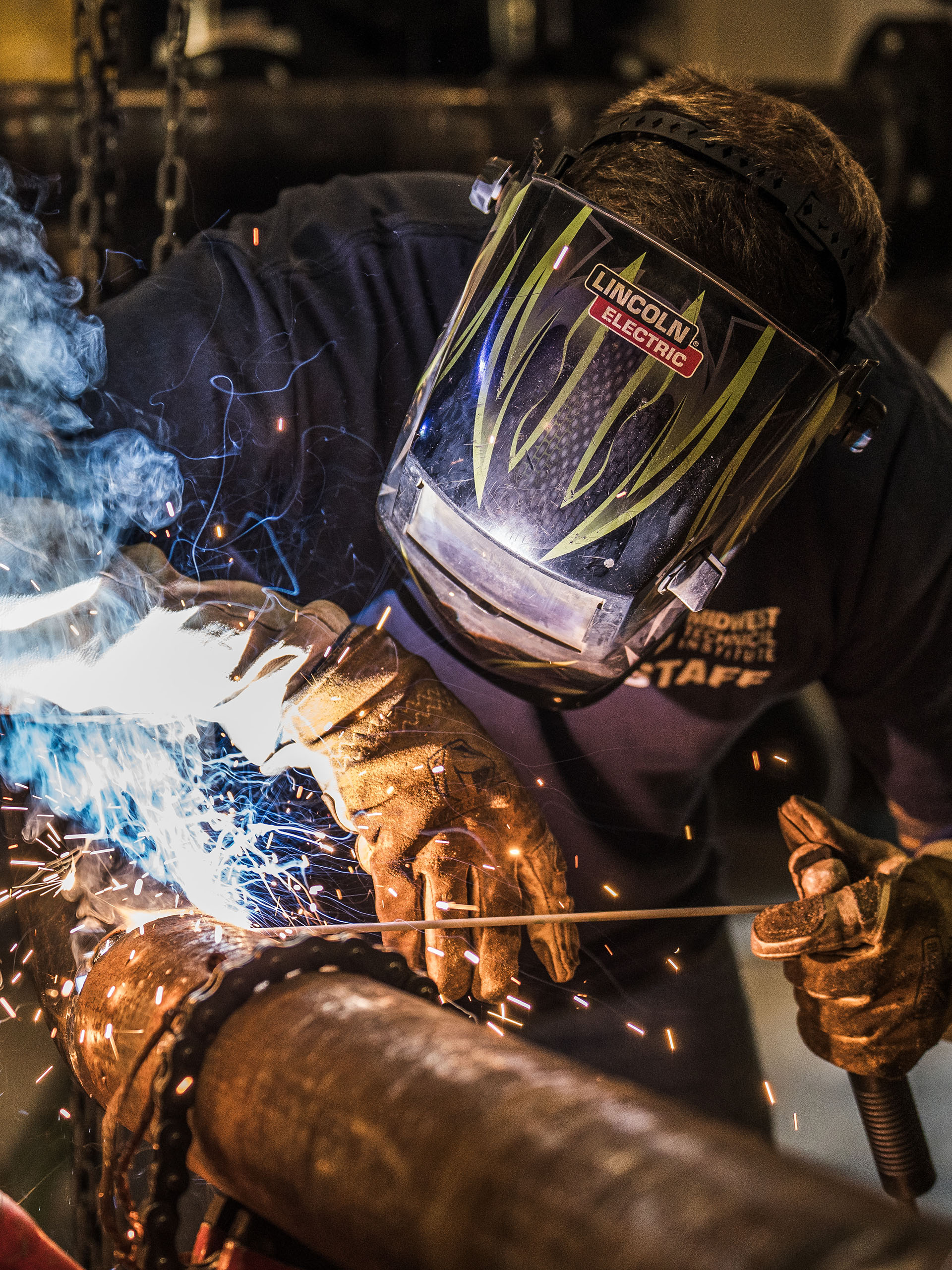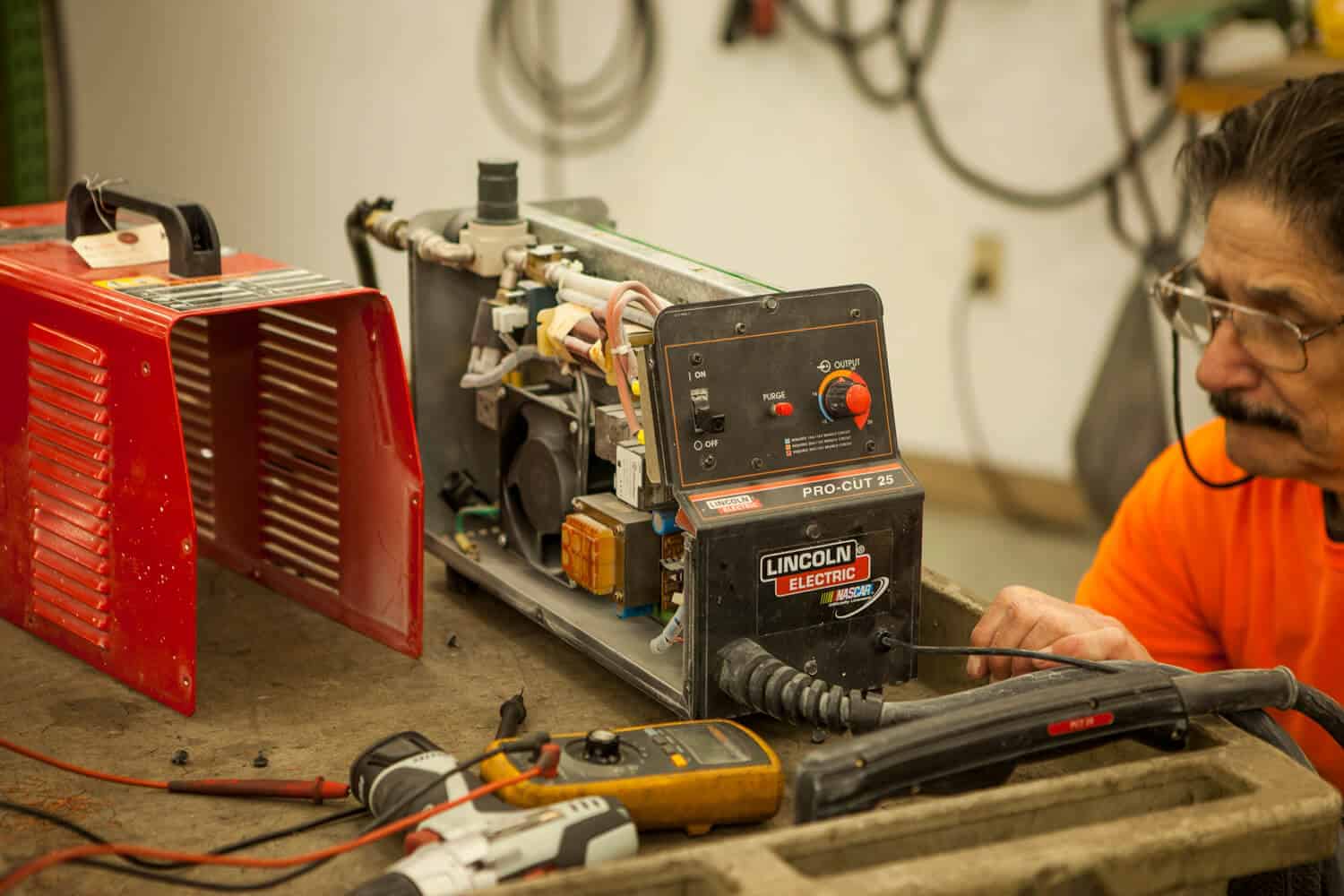Best ways to deal with warping in Montana Mobile Welding and Repair Belgrade
Typical Welding Fixing Issues and How to Address Them Successfully
Welding fixings typically run into a series of issues that can endanger the stability of the last product. Typical issues include insufficient penetration, porosity, and misalignment, to name a few. Each problem offers one-of-a-kind challenges that require particular methods for resolution. Understanding these issues is essential for welders intending to improve their skills and outcomes. This conversation will certainly check out these usual welding repair work problems and effective approaches to resolve them.
Inadequate Infiltration
Poor infiltration occurs when the weld steel stops working to completely fuse with the base material, causing weak joints and possible structural failings. This issue commonly comes from insufficient warmth input, inaccurate electrode angle, or improper welding rate. Welders might encounter inadequate penetration because of a miscalculation of the necessary parameters for a details product thickness or type. In addition, contamination on the base product's surface area can prevent effective bonding, aggravating the problem. To resolve inadequate infiltration, welders need to guarantee suitable settings on their equipment and keep a tidy job surface area. Normal evaluation of welds is suggested to determine any kind of shortages early, enabling prompt adjustments and the avoidance of jeopardized architectural stability in welded assemblies.
Porosity
Porosity is an usual defect in welded joints that manifests as small gas bubbles trapped within the weld metal. This flaw can endanger the integrity of the weld, bring about decreased stamina and possible failure under anxiety. Welding. Porosity normally occurs from contamination, moisture, or incorrect welding techniques, which permit gases to escape right into the molten weld swimming pool. To deal with porosity, welders must assure appropriate surface area prep work, preserve a clean working atmosphere, and make use of appropriate welding criteria. In addition, selecting the ideal filler material and securing gas can mitigate gas entrapment. Normal evaluation and testing of welds can aid determine porosity early, guaranteeing timely corrective actions are taken, consequently maintaining the top quality and integrity of the welded framework
Imbalance
Misalignment in welding can develop from numerous variables, including inappropriate arrangement and thermal development. Understanding the source is important for effective resolution. Numerous modification strategies are readily available to straighten components and ensure architectural stability.
Sources of Imbalance
Welding imbalance usually comes from a range of underlying issues that can jeopardize structural integrity. One main reason is inappropriate fit-up of parts prior to welding, which can bring about spaces and uneven surface areas. Variants in thermal growth throughout the welding process can also cause distortion, specifically if the products being joined have various coefficients of growth. In addition, inadequate fixturing and securing may fall short to hold elements firmly in location, bring about movement throughout welding. Badly conserved devices, consisting of welding makers and tools, might introduce disparities in the weld grain, additional adding to imbalance. Ultimately, driver mistake, originating from inadequate training or experience, can additionally play a significant function in creating misaligned welds.
Adjustment Strategies Available
Attending to imbalance effectively needs a mix of restorative strategies customized to the certain problems at hand. One usual technique is making use of components or jigs to hold components in the proper placement during welding, ensuring constant alignment. Furthermore, preheating the materials can assist minimize distortion and boost fit-up. For substantial imbalance, mechanical adjustment strategies, such as using hydraulic jacks or clamps, can be utilized to remedy the position before welding. Post-weld warmth therapy may likewise be needed to soothe tensions triggered by imbalance. Lastly, mindful inspection and modification throughout the configuration stage can protect against imbalance problems from becoming substantial troubles, advertising a smoother welding process and enhancing general architectural honesty.
Distortion
Distortion is an usual difficulty in welding that can emerge from numerous variables, consisting of uneven heating and cooling. Recognizing the reasons for distortion is vital for implementing effective avoidance techniques. Addressing this problem not just improves structural honesty but additionally improves the overall top quality of the weld.
Sources of Distortion
When subjected to the extreme warmth of welding, products typically undergo modifications that can result in distortion. This phenomenon largely develops from thermal expansion and contraction during the welding process. As the weld area heats up, the product increases; upon air conditioning, it contracts, which can create interior tensions. In enhancement, unequal home heating across a work surface can intensify these tensions, resulting in bending or bending. The type of material likewise plays a significant duty; steels with differing thermal conductivity and coefficients of growth might react differently, resulting in unforeseeable distortions. Furthermore, inadequate joint style and inadequate fixturing can add to imbalance during welding, boosting the possibility of distortion. Comprehending these causes is essential for efficient welding repair and prevention approaches.
Avoidance Techniques
Efficient avoidance techniques for distortion during welding emphasis on controlling warm input and guaranteeing correct joint layout. Keeping a regular warmth input assists to lessen thermal development and tightening, which can cause distortion. Making use of strategies such as pre-heating the work surface can likewise decrease the temperature slope, advertising consistent home heating. Additionally, choosing proper joint styles, such as T-joints or lap joints, can boost security and lower tension focus. Implementing correct fixturing to secure the workpieces in position even more aids in keeping positioning during the welding process. Staggered welding sequences can distribute heat a lot more equally, protecting against localized distortion. By using these reliable welding strategies, welders can significantly reduce the possibility of distortion and boost the general high quality of their welds.
Breaking
Breaking is an usual concern run into in welding repair work, commonly resulting from numerous factors such as inappropriate air conditioning rates, material option, or poor joint preparation. The incident of splits can significantly compromise the honesty of the weld, causing possible failures throughout procedure. To address this problem, welders have to first evaluate the root causes, guaranteeing that materials are compatible and properly picked for the particular application. In addition, managing the air conditioning rate throughout the YOURURL.com welding procedure is crucial; fast air conditioning can generate anxiety and result in cracking. Correct joint style and preparation additionally add to lessening the danger. Carrying out these approaches can boost weld top quality and sturdiness, inevitably decreasing the possibility of cracking in completed weldments.

Insufficient Combination
A significant issue in welding repair services is insufficient combination, which takes place when the weld metal does not adequately bond with the base material or previous weld passes - Welding. This flaw can bring about weaknesses in the joint, possibly compromising the integrity of the welded framework. Aspects adding to incomplete fusion consist of not enough warmth input, inappropriate welding strategy, and contamination of the surface areas being signed up with. To resolve this concern effectively, welders should guarantee proper pre-weld cleansing and surface preparation, in addition to readjust their welding specifications to attain adequate penetration and blend. Normal assessment during the welding procedure can additionally aid determine incomplete combination early, permitting for timely corrective actions to boost the total high quality of the weld
Overheating
While welding repairs can enhance structural stability, overheating provides a substantial obstacle that can bring about product degradation. Extreme warm throughout welding can alter the mechanical residential or commercial properties of steels, leading to minimized strength, boosted brittleness, and warping. This phenomenon is specifically crucial in high-stress applications where structural dependability is vital. Determining getting too hot can entail visual buzz box welder assessments for discoloration or distortion, as well as keeping track of temperature during the welding process. To minimize the risks associated with getting too hot, welders ought to use proper techniques, such as controlling warmth input, readjusting travel speed, and utilizing ideal filler products. In addition, implementing pre- and post-weld warmth treatments can help bring back material properties and boost the general top quality of the repair, making certain long-lasting efficiency and security.
Often Asked Inquiries
What Are the Typical Indicators of a Welding Flaw?

Exactly How Can I Check My Welds for Quality?
To check welds for top quality, one can use visual examinations, ultrasonic testing, and radiographic approaches. Each strategy guarantees architectural honesty, recognizes issues, and validates adherence to defined standards, ultimately enhancing the dependability of the welded joints.
What Security Preventative Measures Should I Take While Welding?
When welding, one should focus on safety by using proper individual safety equipment, guaranteeing correct ventilation, protecting combustible materials away, maintaining a clean workspace, and being aware of surroundings to stop injuries and mishaps.
Can I Fix a Weld Without Remodeling the Entire Joint?
Fixing a weld without renovating the whole joint is feasible, relying on the damage (Montana Mobile Welding and Repair Belgrade Welding). Techniques such as grinding, including filler product, or using a welding process can properly address certain flaws while maintaining the surrounding structure
What Tools Are Crucial for Reliable Welding Repairs?
Important devices for efficient welding repairs include a welding machine, cable brush, mill, protective equipment, clamps, and filler products. Each tool plays an essential duty in ensuring top quality and safety and security throughout the repair work procedure. Porosity commonly arises from contamination, dampness, or improper welding methods, which enable gases to escape into the liquified weld swimming pool. Badly maintained tools, consisting of welding makers and tools, might present inconsistencies in the weld bead, further contributing to misalignment. When subjected to the intense heat of welding, materials often undergo modifications that can lead to distortion. Fracturing is a typical issue run into in welding fixings, commonly resulting from different variables such as inappropriate cooling rates, material choice, or insufficient joint prep work. A considerable problem in welding fixings is insufficient fusion, which happens when the weld steel does not adequately bond with the base product or previous weld passes.